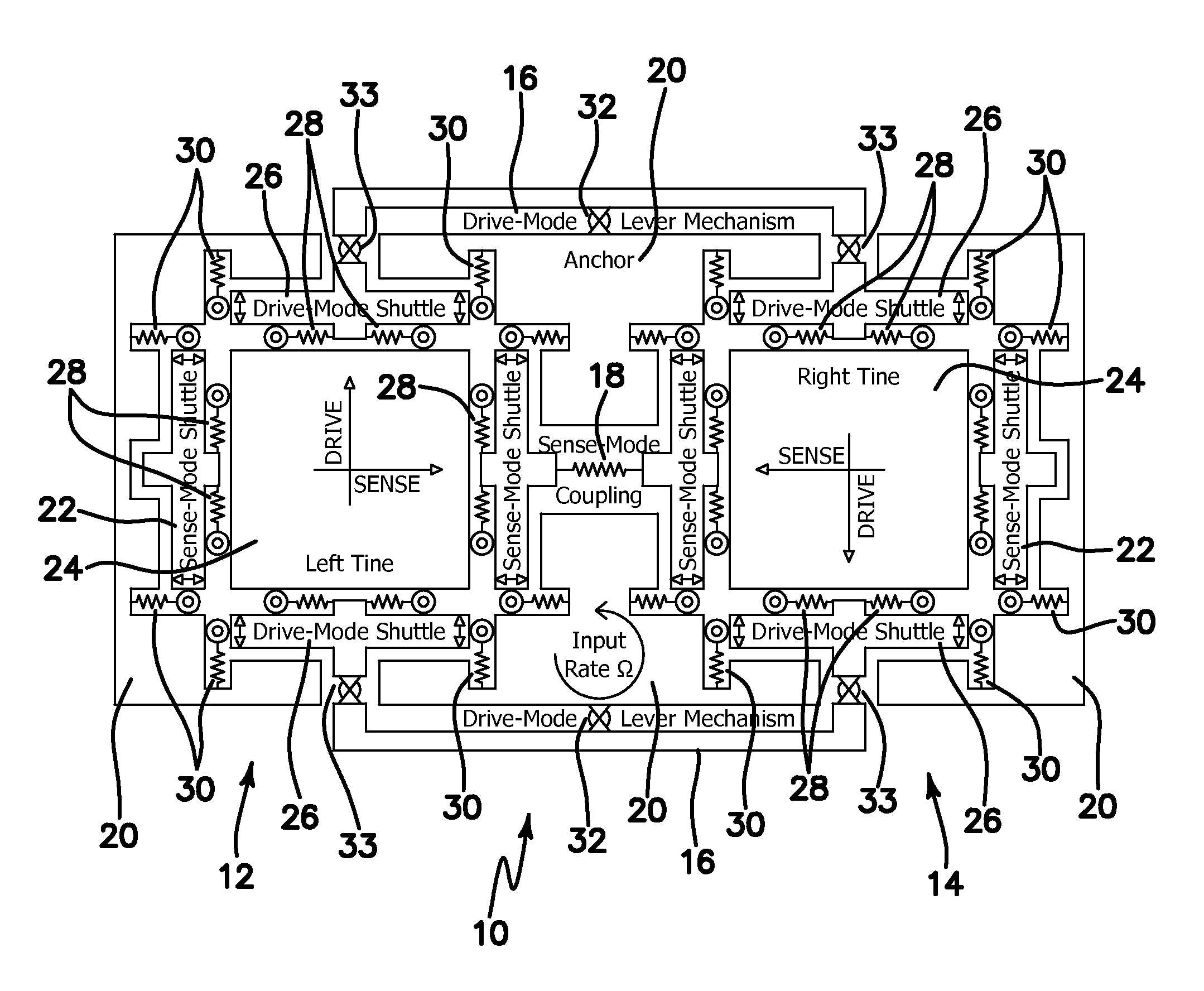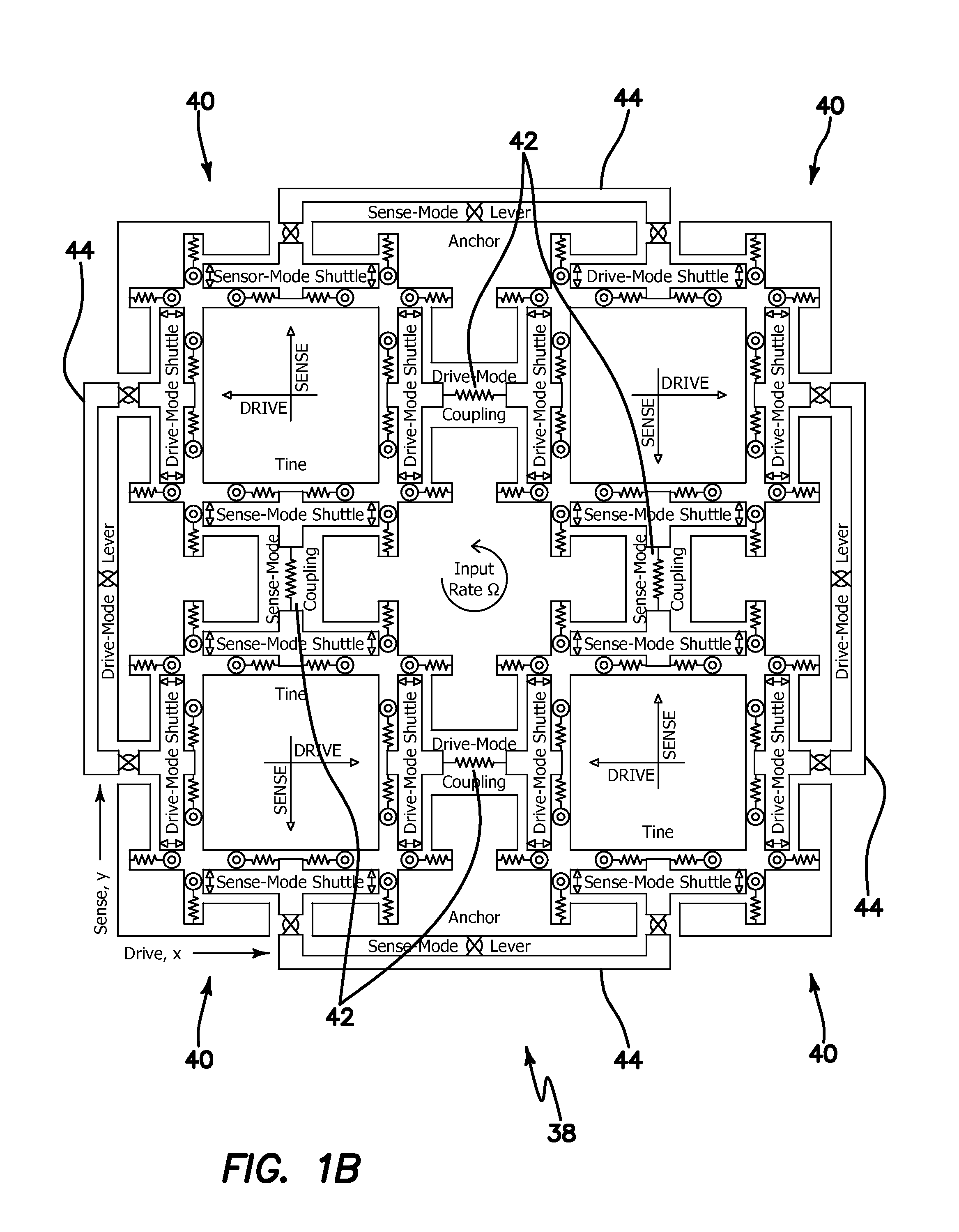Micromachined tuning fork gyroscopes with ultra-high sensitivity and shock rejection
- Summary
- Abstract
- Description
- Claims
- Application Information
AI Technical Summary
Benefits of technology
Problems solved by technology
Method used
Image
Examples
first embodiment
[0067]the dual mass gyroscope architecture has a structurally forced anti-phase drive-mode and a linearly coupled, dynamically balanced anti-phase sense-mode. The design utilizes two symmetrically-decoupled tines with drive- and sense-mode synchronization mechanisms, and prioritizes the sense-mode quality factor. The levered drive-mode mechanism structurally forces the anti-phase drive-mode motion and eliminates the lower frequency spurious modes. The linearly coupled, dynamically balanced anti-phase sense-mode design minimizes substrate energy dissipation leading to enhancement of the quality factor and rate sensitivity.
second embodiment
[0068]A second embodiment includes a quadruple mass gyroscope architecture which builds upon the dual mass design by coupling together two dual mass devices to achieve completely symmetric, mode-matched mechanical structure with ultra-high quality factor in both the drive- and sense-mode. The quadruple mass design of the rate sensor element preserves the ultra-high sensitivity of the dual mass design. At the same time, the quadruple mass design provides complete mechanical rejection of external vibrations and shocks along both drive and sense axes and improved robustness to fabrication imperfections and temperature induced frequency drifts.
[0069]Prototypes of the gyroscopes were designed, implemented, and fabricated using an in-house, wafer scale silicon-on-insulator (SOI) bulk micromachining process, and experimentally characterized. Dual mass tuning fork gyroscope prototype characterized in vacuum demonstrated drive-mode quality factor of 67,000 and sense- mode quality factor of 1...
PUM
 Login to View More
Login to View More Abstract
Description
Claims
Application Information
 Login to View More
Login to View More - R&D
- Intellectual Property
- Life Sciences
- Materials
- Tech Scout
- Unparalleled Data Quality
- Higher Quality Content
- 60% Fewer Hallucinations
Browse by: Latest US Patents, China's latest patents, Technical Efficacy Thesaurus, Application Domain, Technology Topic, Popular Technical Reports.
© 2025 PatSnap. All rights reserved.Legal|Privacy policy|Modern Slavery Act Transparency Statement|Sitemap|About US| Contact US: help@patsnap.com



